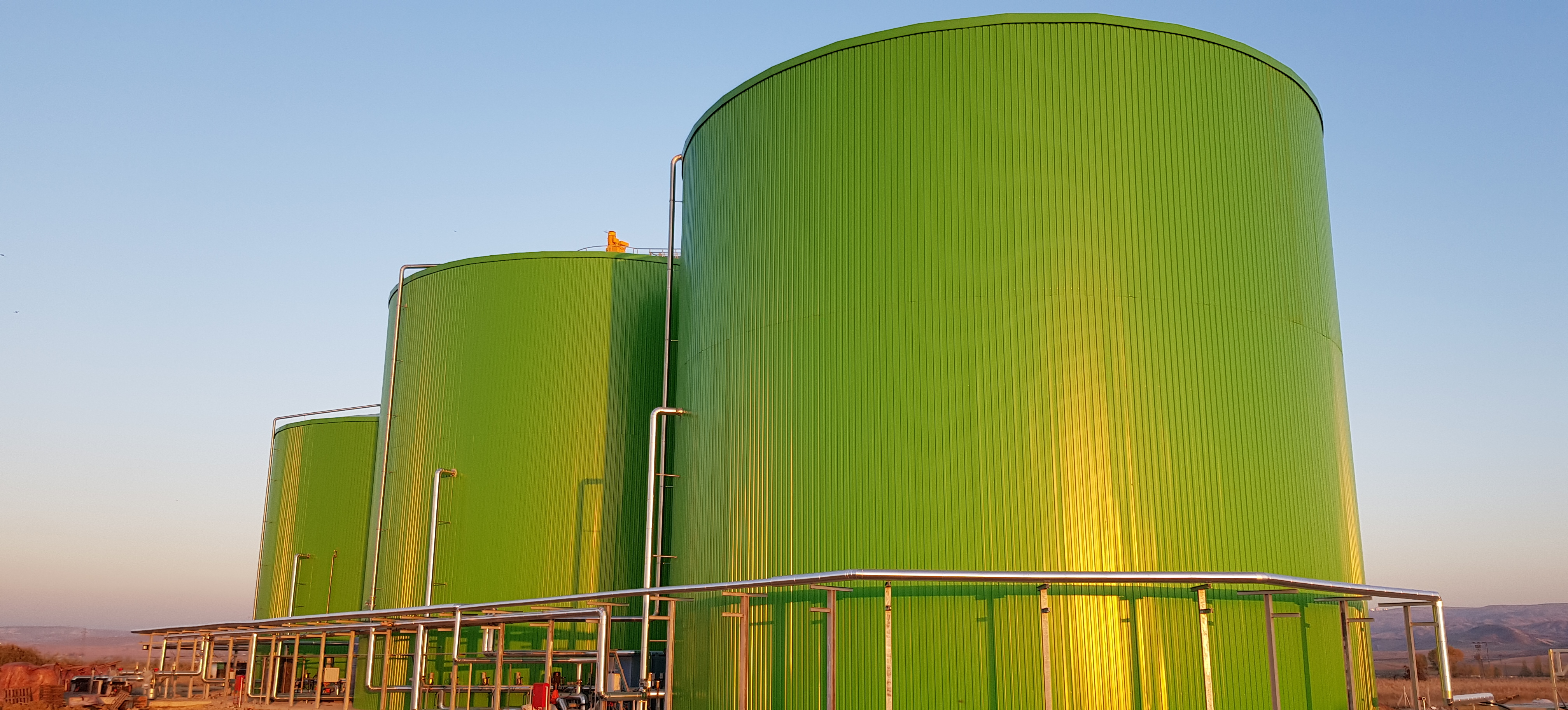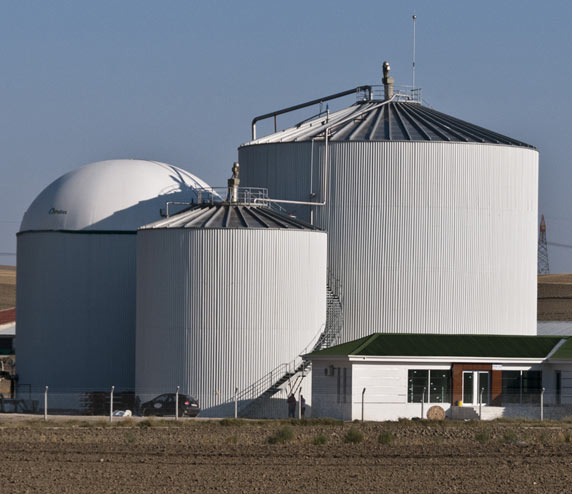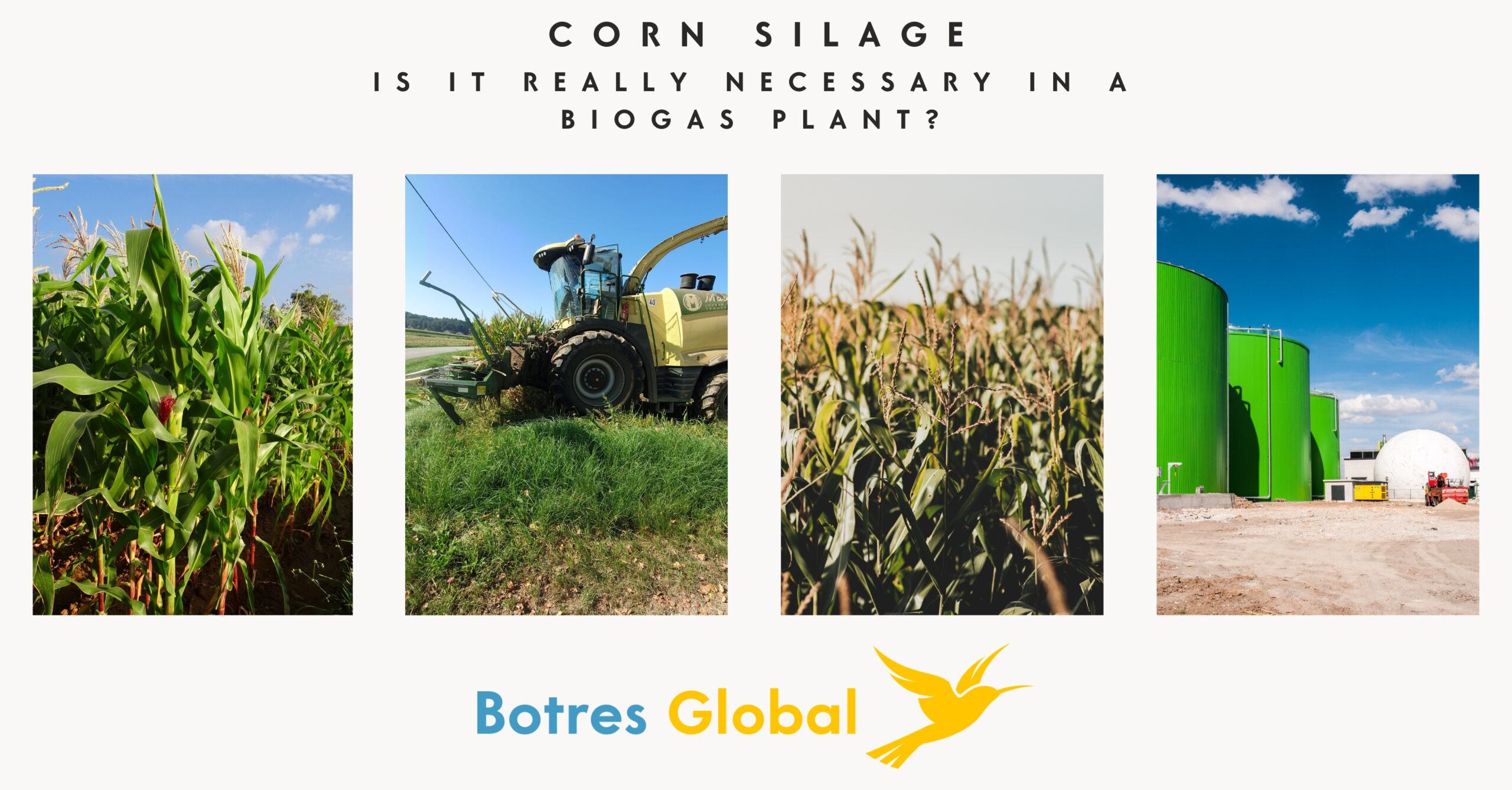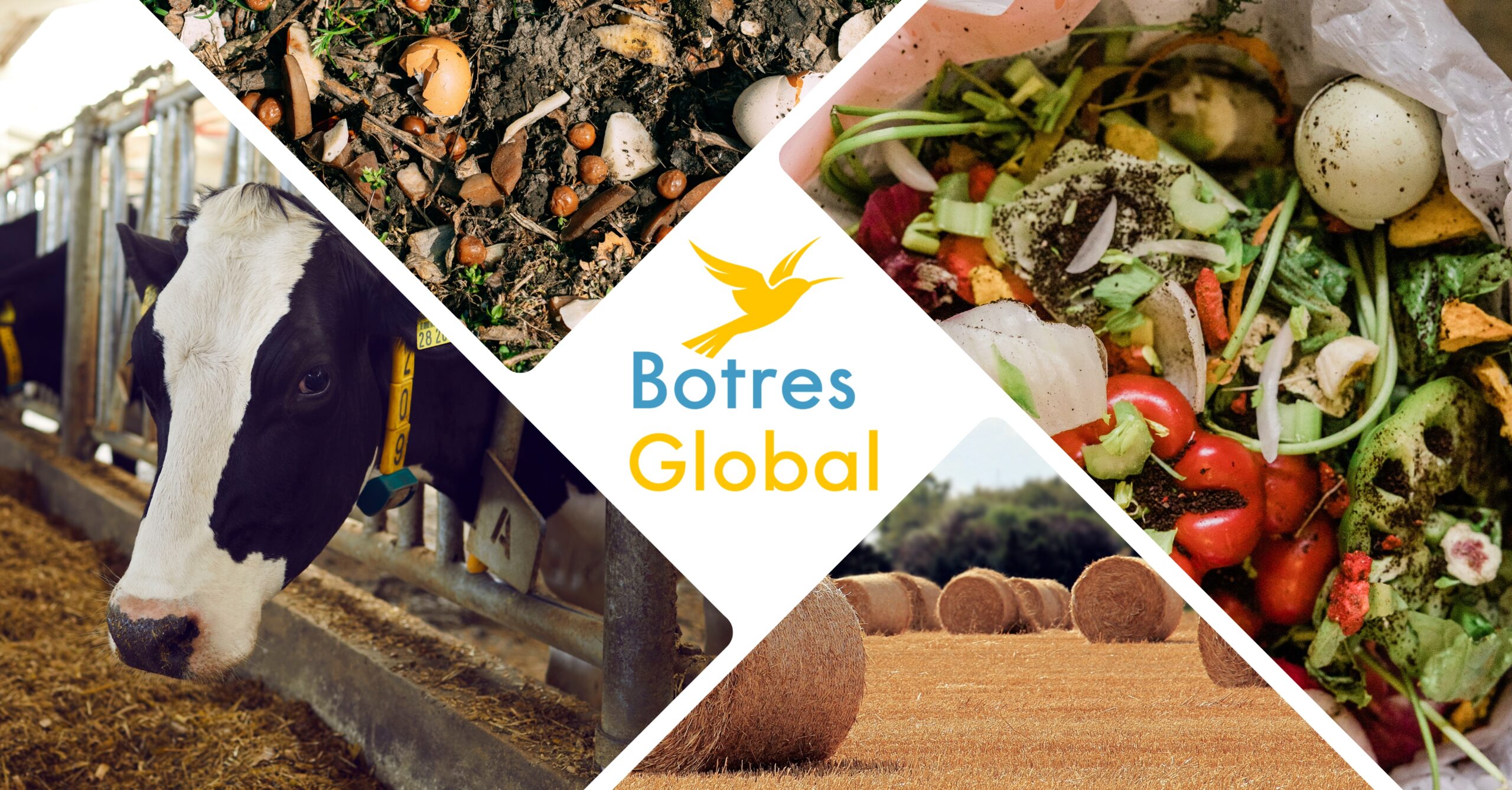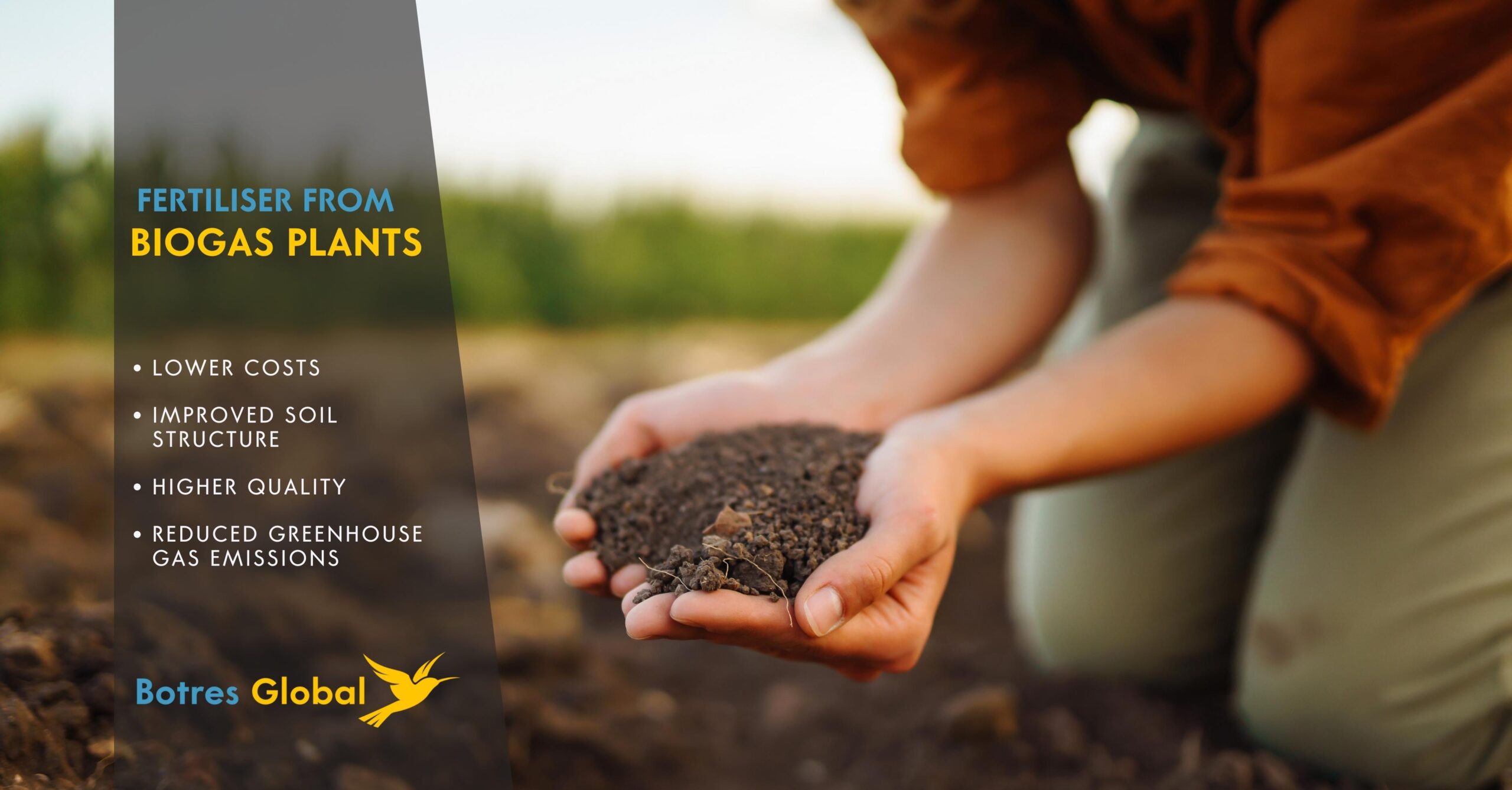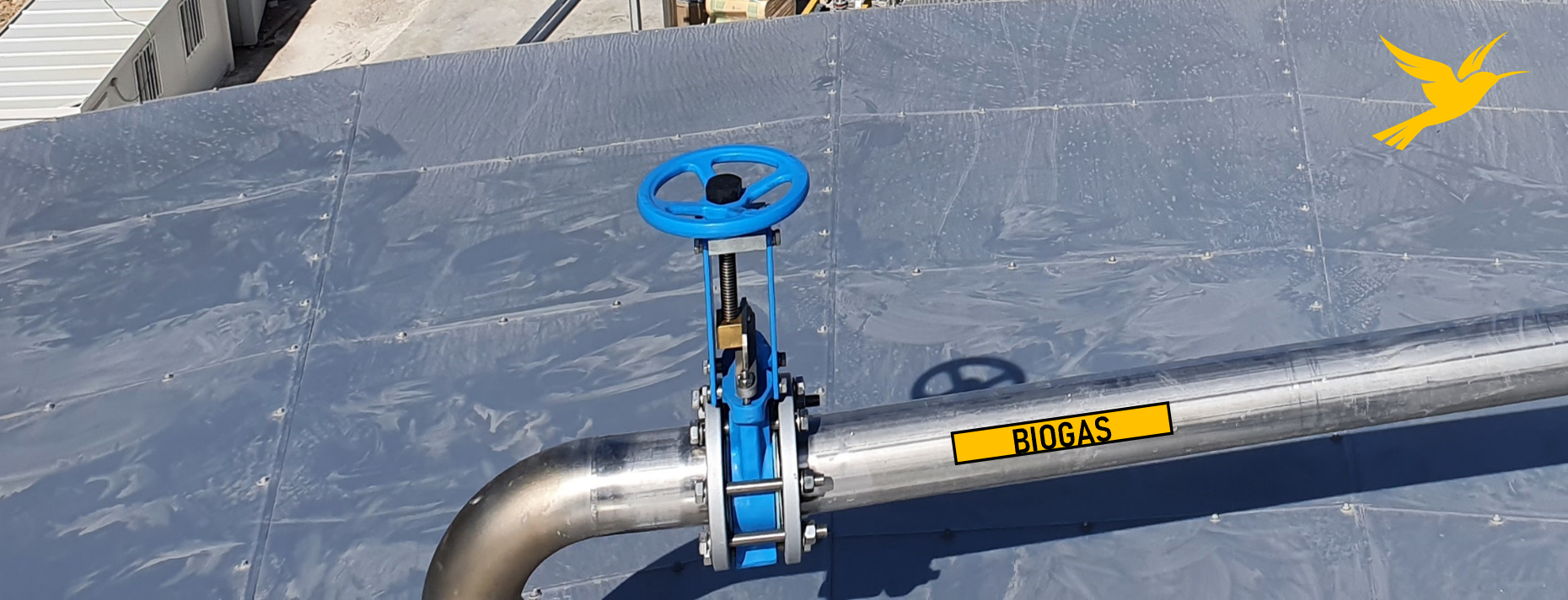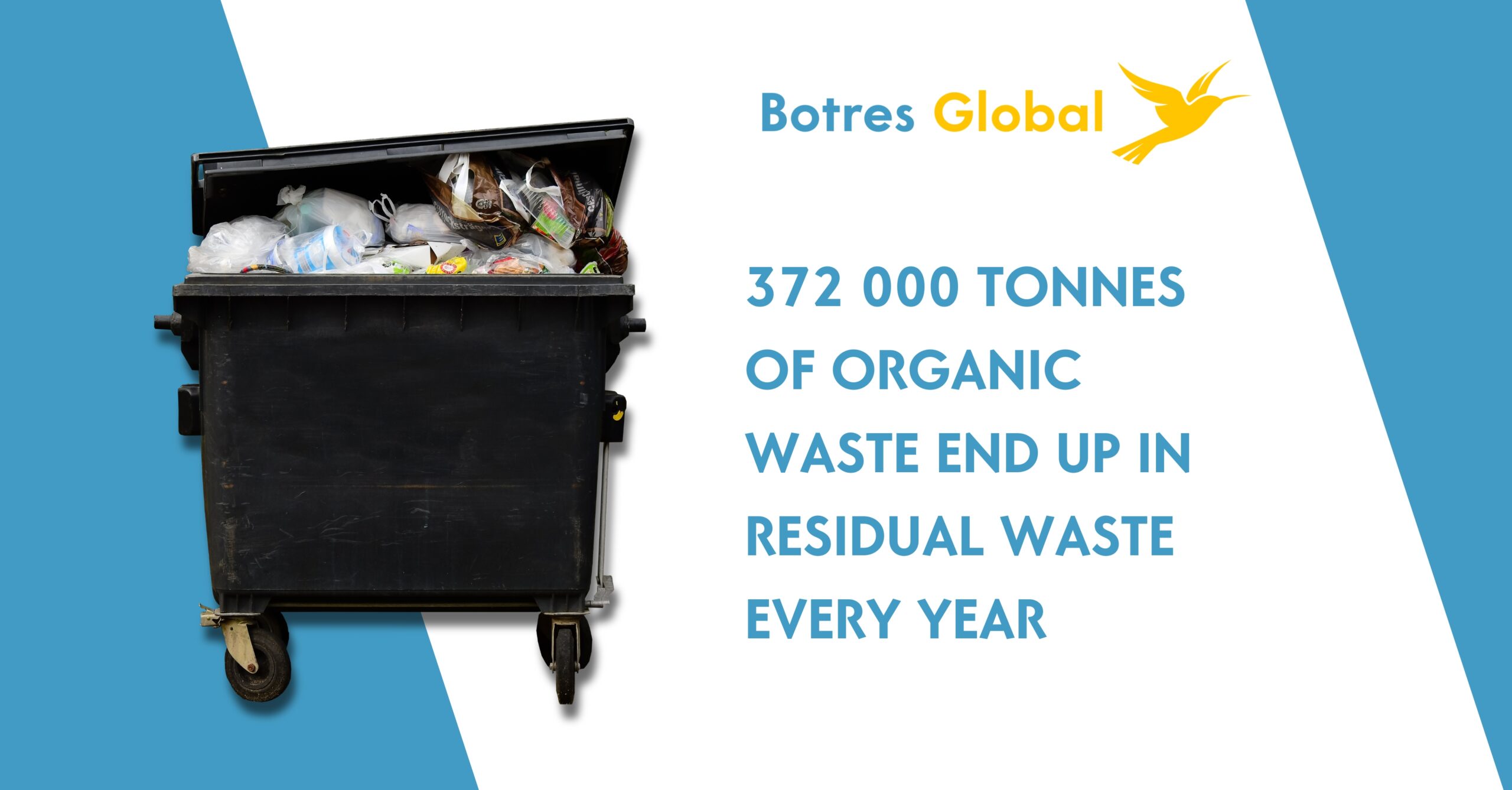GENERATING BIOGAS IN A SUSTAINABLE WAY
ANAEROBIC DIGESTION
Anaerobic digestion (AD) is a biological process where micro-organisms break down organic matter, such as food waste or animal manure, in the absence of oxygen. This natural decomposition takes place within sealed tanks. Our AD technology utilises CSTR (Continuous Stirred Tank Reactor) digesters equipped with foam and scum layer prevention systems, as well as sediment removal solutions. This ensures a stable process and continuous biogas production, eliminating downtime caused by sedimentation, foaming, or other issues typically seen in standard agricultural plants.
Our biogas plants operate on a multi-feedstock basis, meaning they can process a wide variety of organic waste simultaneously. There’s no need for costly feedstocks such as silage to maintain process stability, making our plants both efficient and cost-effective.
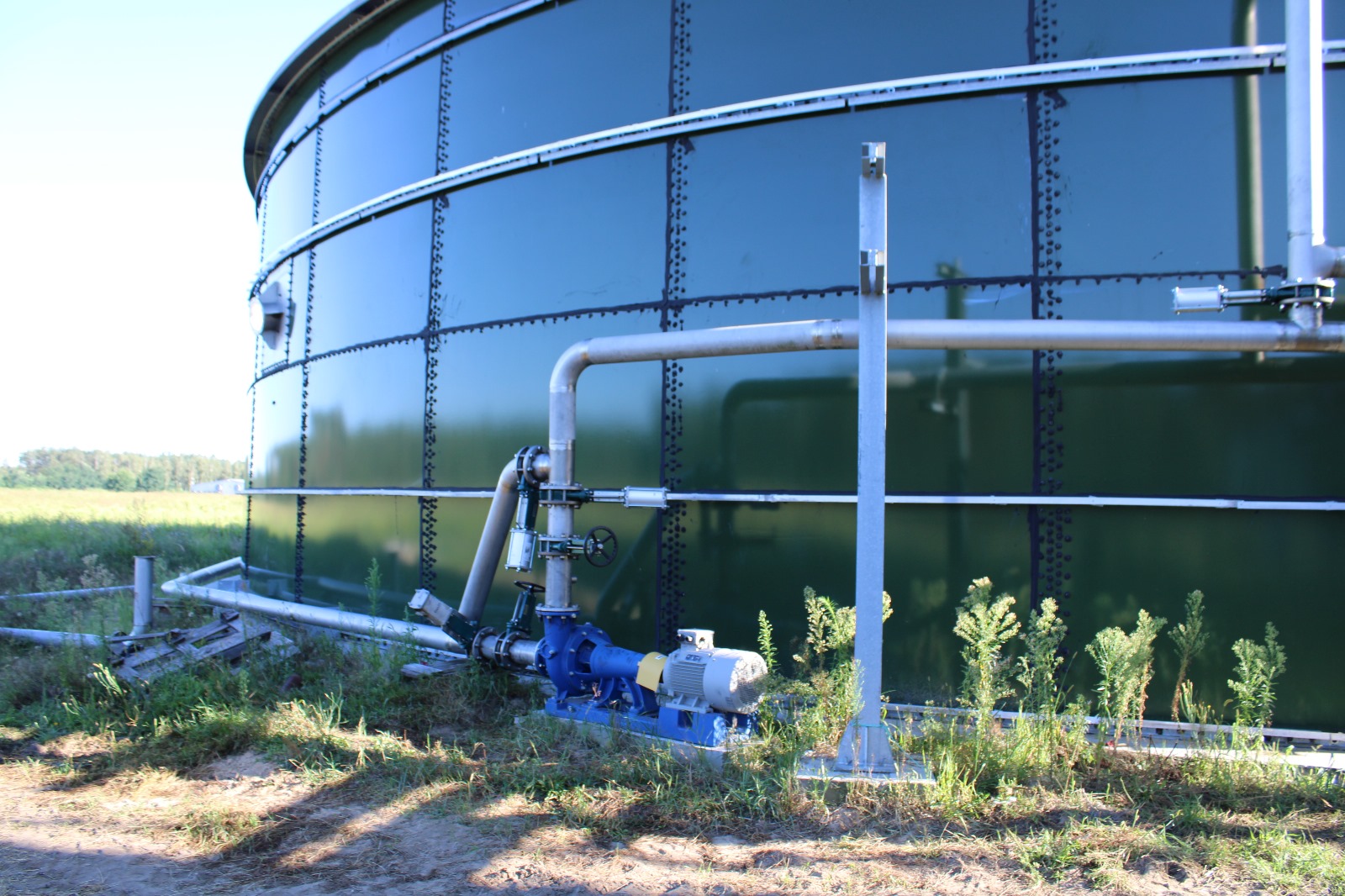
THE ROLE OF HYDROLYSIS IN AD PROCESS
For many years, we have optimised the efficiency of our biogas plants by separating hydrolysis from methane fermentation.
During the hydrolysis phase, large organic compounds are broken down through bacterial enzymatic activity, resulting in acidification and improved substrate breakdown. This biotechnological separation of hydrolysis and methane fermentation significantly increases the efficiency of anaerobic digestion, ensuring our customers achieve the highest possible biogas yield.
Our technology guarantees very high availability, based on real operational analysis rather than theoretical calculations, keeping operating costs low and profitability high.
